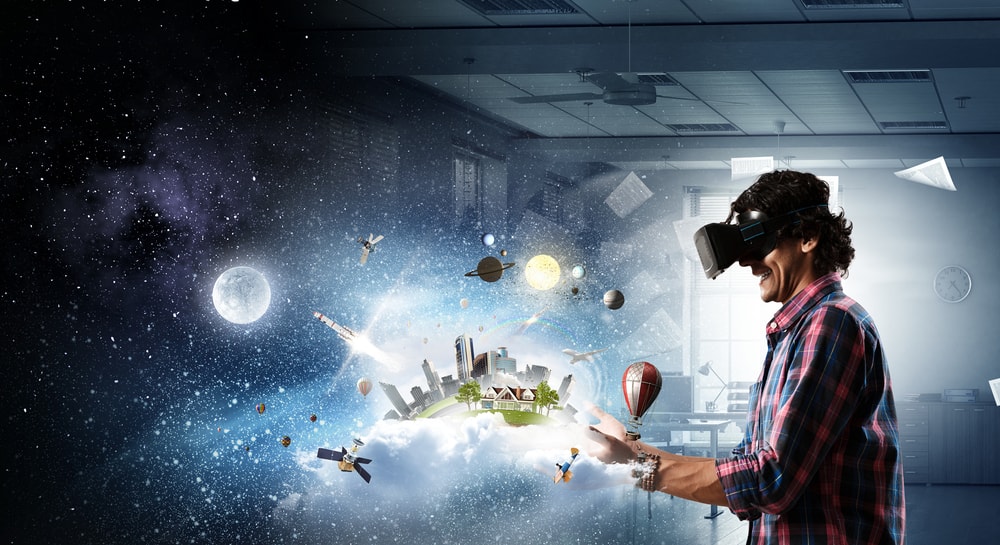Virtual reality (VR) has emerged as a groundbreaking technology in the gaming industry, revolutionizing the way players interact with digital environments. As we delve into the topic of Virtual Reality In Gaming: Current Trends And Future Prospects, it becomes evident that VR is not just a fleeting trend but a transformative force reshaping the gaming landscape. With advancements in hardware and software, gamers are now able to immerse themselves in lifelike experiences that were once the realm of science fiction.
In this article, we will explore the latest trends in virtual reality gaming, including the rise of social VR platforms, the integration of artificial intelligence, and the development of more accessible VR devices. We will also discuss how these innovations are enhancing player engagement and creating new opportunities for game developers. Furthermore, we will look ahead to the future prospects of VR in gaming, examining potential advancements and the challenges that lie ahead.
Whether you are a seasoned gamer or new to the world of virtual reality, this article promises to provide valuable insights into how VR is shaping the future of gaming. Join us as we uncover the exciting developments in this dynamic field and discover what the future holds for virtual reality enthusiasts. Read on to stay informed and inspired by the possibilities that VR technology brings to the gaming experience!
Virtual reality (VR) has revolutionized the gaming industry, offering immersive experiences that were once thought to be the stuff of science fiction. As technology continues to advance, the trends in VR gaming are evolving rapidly, shaping the future of how we play and interact with games. This article explores key subtopics that highlight the current trends and future prospects of virtual reality in gaming.
The Rise of Standalone VR Headsets
Standalone VR headsets have gained significant popularity due to their ease of use and accessibility. Unlike traditional VR systems that require powerful gaming PCs or consoles, standalone devices like the Oculus Quest series offer a self-contained experience. This trend has made VR gaming more accessible to a broader audience, allowing players to enjoy immersive experiences without the need for extensive setups.
As technology improves, standalone headsets are becoming more powerful, featuring higher resolution displays and improved tracking capabilities. This shift is likely to continue, making VR gaming a more mainstream option. The convenience of these devices is attracting casual gamers, which could lead to a surge in VR game development and innovation.
Social Interaction in Virtual Reality
Social interaction is a crucial aspect of gaming, and VR is enhancing this experience in unprecedented ways. Platforms like VRChat and Rec Room allow players to interact in virtual spaces, fostering a sense of community. These social VR experiences are becoming increasingly popular, as they enable users to connect with friends and meet new people in immersive environments.
The future of social interaction in VR gaming looks promising, with developers focusing on creating more engaging and interactive experiences. As technology advances, we can expect to see more sophisticated social features, such as virtual events and collaborative gameplay, further blurring the lines between social media and gaming.
The Integration of Augmented Reality (AR)
The integration of augmented reality (AR) with virtual reality is an emerging trend that is reshaping the gaming landscape. Games like Pokémon GO have demonstrated the potential of AR, and developers are now exploring ways to combine AR and VR for a more immersive experience. This hybrid approach allows players to interact with both virtual and real-world elements, creating unique gameplay opportunities.
As AR technology continues to evolve, we can expect to see more games that leverage this combination. The potential for location-based gaming and interactive storytelling is vast, offering players a new dimension of engagement. This trend could lead to innovative gameplay mechanics that enhance the overall gaming experience.
Enhanced Graphics and Realism
One of the most significant trends in VR gaming is the continuous improvement in graphics and realism. With advancements in hardware and software, developers are creating visually stunning environments that enhance immersion. High-fidelity graphics, realistic physics, and lifelike animations contribute to a more engaging experience, drawing players deeper into the virtual world.
As VR technology matures, we can expect even more realistic graphics and immersive soundscapes. This trend will likely push the boundaries of what is possible in gaming, leading to experiences that feel almost indistinguishable from reality. The demand for high-quality visuals will drive innovation in game design and development.
The Role of Artificial Intelligence in VR Gaming
Artificial intelligence (AI) is playing an increasingly important role in VR gaming, enhancing gameplay and creating more dynamic experiences. AI can be used to develop intelligent NPCs (non-player characters) that react realistically to player actions, making the virtual world feel more alive. This technology can also personalize experiences based on player behavior, adapting challenges and narratives to individual preferences.
As AI continues to evolve, its integration into VR gaming will likely become more sophisticated. This could lead to more engaging storylines, improved gameplay mechanics, and a deeper level of immersion. The potential for AI-driven experiences in VR is vast, paving the way for innovative game design.
Future Prospects: The Metaverse and Beyond
The concept of the metaverse is gaining traction, and virtual reality is poised to play a significant role in its development. The metaverse represents a collective virtual space where users can interact, socialize, and engage in various activities. As VR technology advances, the potential for creating expansive, interconnected virtual worlds becomes more feasible.
In the future, we may see a convergence of gaming, social media, and commerce within the metaverse. This could lead to new business models and opportunities for developers, as well as a
| Aspect | Description |
|---|---|
| Current Trends |
|
| Popular VR Games |
|
| Challenges |
|
| Future Prospects |
|



